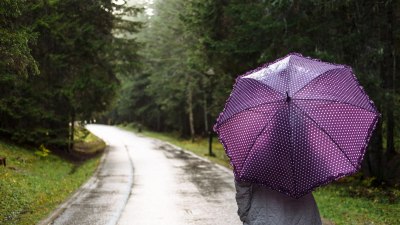Why Outdoor Wi-Fi Always Fails When the Weather Is Perfect
Explore the surprising reasons outdoor Wi-Fi often fails during perfect weather and how environmental factors impact wireless performance.

Image created with Flux Schnell
Outdoor Wi-Fi has become an essential convenience in public spaces, parks, cafes, and even outdoor events, promising seamless internet access under the open sky. However, users frequently encounter erratic connections, sluggish speeds, or complete dropouts, especially seemingly contradictory during perfect weather conditions when no apparent storms or disruptions exist. This paradox has left many frustrated, questioning why outdoor Wi-Fi appears to fail when the weather itself seems ideal. To understand this phenomenon, it's crucial to explore the nature of wireless signals, environmental factors, infrastructure challenges, and human-related issues that interplay to affect Wi-Fi performance outside.
The Nature of Wi-Fi Signals in Outdoor Environments
Wi-Fi communication relies on radio waves, typically operating around the 2.4 GHz and 5 GHz frequency bands. Indoors, signals can reflect off walls and navigate through obstructions, but outdoors, open spaces expose transmissions to different propagation characteristics. Unlike controlled interiors, outdoor environments present dynamic variables, including physical obstructions like trees and buildings, atmospheric conditions, and interference from other electronic devices. While clear skies might suggest ideal transmission, it is the invisible radio environment that dictates Wi-Fi quality more than visible weather.
Wi-Fi signals diminish over distance and lose strength due to physical obstacles, atmospheric absorption, and interference. Outdoors, the absence of reflective surfaces can sometimes reduce signal multipath benefits, while foliage and environmental elements can absorb or scatter instead of reflect signals. This inherent unpredictability can cause inconsistent connectivity despite calm, sunny weather.
Impact of Environmental Factors Beyond Weather
Although weather terms like rain, fog, or storms are well-known disruptors of wireless signals, seemingly stable weather can mask other significant outdoor impediments. For example, temperature fluctuations can alter air density, subtly influencing signal propagation. Moreover, humidity can affect signal attenuation differently at various frequencies. On a bright sunny day, interactions between solar radiation and atmospheric particles can contribute more to signal degradation than anticipated.
Vegetation density plays a major role as well. Trees, leaves, and plants absorb or scatter Wi-Fi signals, especially in the higher frequency 5 GHz band. During warmer seasons when foliage is lush and dense, signal blockage or scattering might increase substantially compared to colder months with less vegetation. Thus, the perfect weather scenario—sunny but surrounded by thick greenery—might ironically reduce Wi-Fi efficacy more than an overcast day with sparse foliage.
Interference and Spectrum Congestion
One of the most persistent challenges for outdoor Wi-Fi is radio frequency interference from other devices and networks sharing the spectrum. The unlicensed nature of Wi-Fi bands means anyone can deploy networks or devices using overlapping frequencies. In urban or popular public areas on nice days, increased human presence means more smartphones, tablets, laptops, and other Wi-Fi enabled gadgets competing and causing signal interference. This human-associated interference intensifies on pleasant days when outdoor activity peaks, explaining why Wi-Fi might falter exactly when the weather is favorable.
Nearby networks, microwave ovens, Bluetooth devices, and even wireless security cameras contribute noise on these bands. The 2.4 GHz band is especially crowded, vulnerable to interference from non-Wi-Fi devices such as cordless phones and baby monitors. While 5 GHz provides more channels with less overlap, its signals have shorter range and greater attenuation, limiting its outdoor reliability relative to 2.4 GHz. Consequently, the balance between frequency band selection, interference, and user density critically shapes outdoor Wi-Fi success or failure during clear weather.
Infrastructure and Deployment Challenges
Outdoor Wi-Fi deployment fundamentally differs from indoor installations. Access points (APs) must contend with environmental exposure, requiring weatherproof hardware and optimal placement to maximize coverage. Cost, aesthetics, and accessibility often limit the number and positioning of outdoor APs. In parks or historic districts, mounting locations might be restricted, leading to suboptimal signal distribution.
Moreover, power availability and backhaul connections (links to the internet) can constrain deployment quality. Poorly powered or underperforming APs deliver weak signals, while slow or overburdened backhaul lines throttle throughput. Network design must balance between coverage, capacity, and interference mitigation by choosing appropriate antennas, transmission power, and channel assignments. Failing to consider peak user density on good weather days leads to overloaded networks and aggregated signal conflicts, causing apparent failures when demand is highest.
Physical Obstructions and Signal Blockage
Beyond foliage, other outdoor physical barriers influence Wi-Fi performance. Construction, parked vehicles, seasonal decorations, and temporary installations can obstruct line of sight or reflect signals unpredictably. Even human bodies significantly absorb and block microwave signals. Paradoxically, the presence of many people enjoying the outdoors during perfect weather can impair signal propagation, creating localized “black spots” where coverage is weak or inconsistent.
Furthermore, asphalt, concrete, soil, and other ground surfaces differentially absorb and reflect signals depending on moisture content and composition. Dry ground in perfect weather might reflect signals away from devices, whereas damp earth after rain can enhance certain propagation paths. Such subtle material interactions emphasize that perfect visible weather does not guarantee optimal radio conditions.
Network Congestion and Overload in Busy Conditions
One of the most influential causes of outdoor Wi-Fi failure during seemingly perfect weather is network congestion. Popular parks, beaches, and plazas attract many visitors simultaneously when conditions are pleasant. Each user’s device contends for bandwidth and airtime, causing signal contention and packet collisions that degrade quality.
Wi-Fi fundamentally shares the medium with a contention-based protocol. When many devices transmit, collisions increase, forcing retransmissions and lowering throughput. This natural bottleneck worsens under heavy user loads, making networks unreliable or unusably slow. Thus, a simple increase in users due to favorable weather can overwhelm networks designed primarily for lower traffic volumes.
Latency, Packet Loss, and User Experience
Even if a connection is established outdoors, the quality of that connection matters for user experience. High latency and packet loss from interference, congestion, or weak signals degrade real-time applications like video calls, gaming, or streaming. On perfect weather days, users may expect smooth operation but receive fragments of poor connectivity causing frustration.
Such performance issues can lead users to perceive Wi-Fi as failing outright, even when it technically “works.” This perception gap highlights the importance of robust network planning and quality assurance tailored for dynamic outdoor scenarios.
Technological Solutions and Advances
Modern technologies and strategic planning can mitigate many outdoor Wi-Fi challenges. Mesh networks allow multiple interconnected APs to dynamically route traffic and balance loads, enhancing coverage in large outdoor spaces. Directional antennas focus signals towards users, reducing interference spread. Adaptive power control and channel selection optimize transmission parameters based on real-time environmental feedback.
Advances like Wi-Fi 6 and Wi-Fi 6E provide increased capacity, improved spatial reuse, and utilization of additional spectrum (in 6 GHz for Wi-Fi 6E) reducing congestion and interference. While these technologies show promise, their deployment in outdoor scenarios still demands careful integration considering environmental challenges unique to open-air settings.
Planning for Peak Usage and Environmental Variability
Successful outdoor Wi-Fi hinges on anticipating peak user activity tied to weather and event schedules. Monitoring traffic patterns helps network managers allocate resources dynamically. Temporary APs or mobile hotspots can supplement capacity during festivals or sunny weekends. Additionally, regular site surveys assess evolving environmental conditions such as growth of trees or new constructions impacting propagation.
Integrating meteorological data with network analytics also opens innovative approaches to forecast wireless performance based on predictive models, allowing preemptive adjustments. Such proactive strategies transform outdoor Wi-Fi from a vulnerable service to a resilient amenity satisfying users’ high expectations.
User Behavior and Device Limitations
User devices vary widely in antenna quality, power, and software optimizations. Older smartphones or laptops might struggle with weak signals or congested networks more than newer models. User habits such as constant roaming, running multiple bandwidth-heavy apps, or positioning devices poorly also affect performance. Educating users on optimal device placement and encouraging updates can improve outcomes.
Moreover, user expectations often exceed realistic limitations of outdoor wireless environments, leading to perceived failures. Clear communication about coverage zones, capacity limits, and usage tips enhances satisfaction by setting proper expectations.
The Role of Security and Network Management
Open outdoor Wi-Fi is also more vulnerable to security threats like unauthorized access, spoofing, or denial-of-service attacks. Network administrators must implement strong authentication, encryption, and regular monitoring. Security mechanisms introduce overhead impacting throughput but are essential for service integrity.
Effective network management tools enable real-time detection of performance degradation, rogue clients, or interference sources, facilitating prompt corrective actions. Without vigilant oversight, outdoor Wi-Fi can degrade unnoticed until users experience failures precisely when weather conditions would otherwise predict a great connection.
Future Perspectives on Outdoor Wi-Fi Reliability
Emerging technologies like Li-Fi (light-based communication), 5G cellular networks with outdoor small cells, and satellite internet may complement or even supplant traditional Wi-Fi for outdoor internet access. However, Wi-Fi’s ubiquity, cost-effectiveness, and compatibility ensure it remains central for foreseeable outdoor connectivity.
Innovations leveraging AI for dynamic spectrum management, environment-aware transmission, and user behavior prediction hold strong potential to minimize failures occurring during optimal weather conditions. The challenge lies in holistic integration balancing physical, technical, and human factors shaping wireless experience beyond mere weather observations.
In summary, outdoor Wi-Fi failures on perfect weather days emerge from complex interplay between radio physics, environmental variability, user density, interference, infrastructure constraints, and device limitations. Understanding and addressing each layer unlocks reliable connectivity that meets public expectations despite natural outdoor unpredictability.











